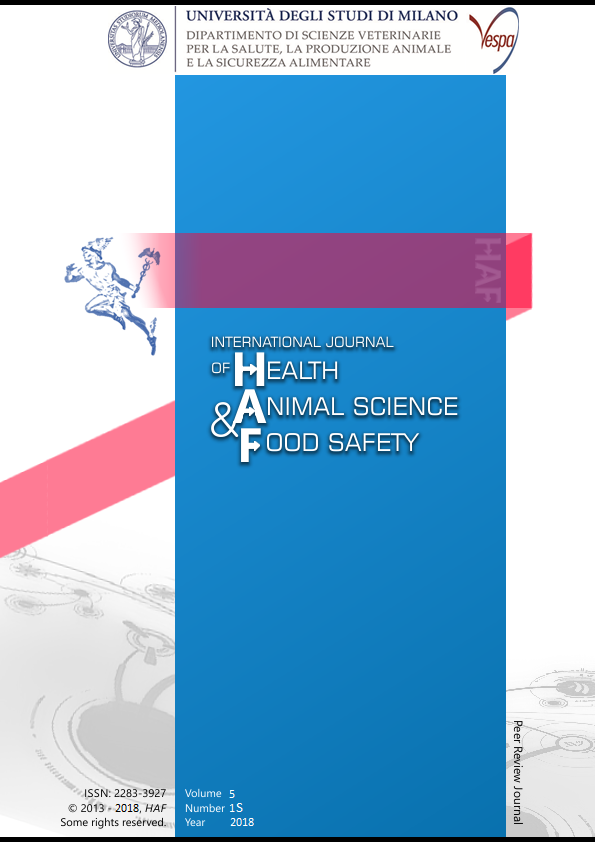Abstract
This paper analyses the long-term effects of Neonatal Calf Diarrhoea (NCD) on the first milk production. A total number of 41 dairy heifers, belonging to two commercial dairy farms were admitted to our Clinic for NCD between 2008 and 2015. Survived animals, once returned to their farm, were followed until the end of the first lactation. As a treatment for NCD, we administered fluids and sodium bicarbonate intravenously according to the dehydration score described by Boccardo et al. (2017) and blood-gas analysis results. The quantity of replacement fluid in liters was calculated as: replacement fluid (L)=dehydration (%) x bodyweight (kg). The required amount of sodium bicarbonate was calculated as: sodium bicarbonate (g) = body weight (kg) × base excess (mmol/L) × 0.6 (L/kg) × 0.084 (g/mmol). Calves with a history of anorexia received 5 mg/kg glucose added to the saline solution. Amoxicillin and clavulanic acid was administered SC at the dose of 10 + 2.5 mg/kg for 5 days to each calf.
During lactation, we analyzed: milk production in a 305-day lactation, average fat percentage, average protein percentage, average somatic cell count and interval from birth to first calving.Furthermore, days of hospitalization and severity of diseasewere considered (average calves age = 8,09 days, average body weight = 41,66 kg, average hospitalization = 10,61 days, average duration of treatment = 5,24 days). As a control, we considered non-hospitalized heifers (n.=238) with the same age, from the same herd, without clinical history of NCD. Differences between the NCD group and control group were analyzed with general linear models. No statistic difference between the NCD group and control group was underlined (Table 1). These findings differ from previous literature results. In fact, Aghakeshmiriet al.(2017) found that the NCD increased the first calving age and heifer raising costs; Svensson and Hultgren (2008) showed that animals survived from NCD had a lower milk production. On the other hand, our results are similar to those reported by Warnicket al.(1994;1995), even if in these works no data regarding the type of treatment and severity of clinical sings were considered. This study, while preliminary, suggests that the timely treatment of NCD could prevent irreversible damages and ensure to reach a reproductive and productive standard during the first lactation. However the simple size needs to be increased.
Riferimenti bibliografici
Boccardo, A., Biffani, S., Belloli, A., Biscarini, F., Sala, G., & Pravettoni, D., 2017. Risk factors associated with case fatality in 225 diarrhoeic calves: A retrospective study. The Veterinary Journal, 228, 38-40.
Svensson, C., and J. Hultgren, 2008. Associations between housing, management, and morbidity during rearing and subsequent first-lactation milk production of dairy cows in southwest Sweden. Journal of Dairy Science 91.4, 1510-1518.
Waltner-Toews, D., S. W. Martin, and A. H. Meek., 1986. The effect of early calfhood health status on survivorship and age at first calving. Canadian Journal of Veterinary Research 50.3, 314.
Warnick, L.D., Erb, H.N., and White, M.E., 1994. The association of calfhood morbidity with first-lactation calving age and dystocia in New York Holstein herds. The Kenya Veterinarian 18, 177–179.
Warnick, L.D., Erb, H.N., and White, M.E., 1995. Lack of association between calfhood morbidity and subsequent first lactation milk production in 25 New York Holstein herds. Journal of Dairy Science 78,2819–2830.
This work is licensed under a CC BY-SA 4.0 international

